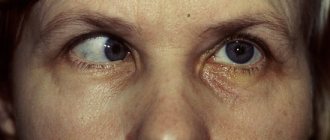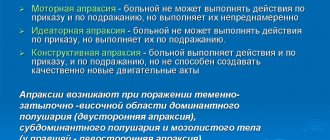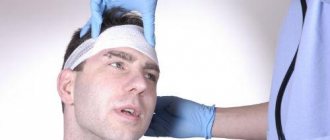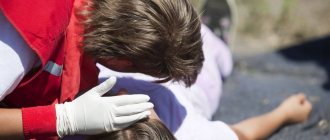Syndrome or symptom?
Very often, many people confuse the concept of symptom and setting sun syndrome. A syndrome is a whole complex of symptoms that indicate certain disturbances in the functioning of the body.
Most newborns have a wandering gaze, and this is due to the fact that their nervous system is not yet fully developed. The baby needs a little time to adapt to the world around him. As a rule, before the 21st day of birth, the wandering gaze disappears. If the pediatrician made a note in the medical history about the presence of setting sun syndrome in the baby, then there is no need to worry, this is done only in order not to miss the pathology.
Also, do not confuse the syndrome with Gefre's syndrome. Indeed, these two phenomena have quite similar symptoms, but have different factors of genesis. Today, the pathology, described back in the 19th century by the ophthalmologist Gefre, is called hydrocephalic syndrome and is classified as a neurological pathology in which degeneration of nerve cells in the brain is observed in newborns. Typically, such children lack mobility in their gaze; they throw their heads back.
In light of this, when we talk about the “setting sun,” this does not mean at all that the child has a pathology. 99% of children experience a wandering gaze at the beginning of life. Such a symptom may be associated with a genetic feature, for example, if one of the relatives had such an anomaly. In such cases, no treatment is required.
If the child was born prematurely, the syndrome can be observed for a longer period of time, up to approximately 28 days from birth. In very rare cases, the defect appears at a later age. The syndrome may appear against the background of certain infectious diseases, due to head trauma or metabolic disorders.
Let's understand the terminology
Graefe syndrome - in modern medical practice, the diagnosis is understood as a severe neurological disease associated with bilateral paralysis of the eye muscles, which occurs as a result of degenerative processes of a number of nerve cells.
The syndrome requires many months of consistent treatment, otherwise severe consequences for human health and life may develop. Graefe's disease is identical to the concept of syndrome.
Graefe's symptom is a single manifestation of the syndrome of the same name. The symptom is that the upper eyelid lags behind the eyeball in its functioning. This is noticeable when the eyeball is lowered down - the eyelid remains raised, as a result of which the eye does not close completely.
The phenomenon is also called the “setting sun symptom.” Unlike the syndrome, the symptom is not life-threatening and often manifests itself because the development of the infant’s unequal system is defective. It is likely that the symptom will gradually disappear spontaneously as you grow older.
Main reasons
One of the causes of setting sun syndrome is hypoxia or birth injuries. Its development can be affected by:
- pathologies in the mother that developed late in pregnancy;
- exacerbation of chronic diseases during pregnancy;
- bradycardia or ischemia;
- infectious diseases.
Such a deviation may also appear against the background of illnesses suffered by the baby himself:
- encephalitis or meningitis;
- disturbances in the functioning of the endocrine system;
- spinal cord injuries;
- trauma at birth;
- brain cyst;
- disruptions in the hormonal system.
After diagnosis, the baby is observed by a pediatrician, but in most cases the symptoms completely go away within a few weeks.
Diagnostic methods
To make a diagnosis, laboratory and hardware examination methods are used:
- Ultrasound (neurosonography of the brain), EEG, EchoEG, REG, examination by an ophthalmologist assessing the condition of the vessels of the visual organs and fundus of the eye - if hydrocephalus is suspected.
- X-ray, lumbar puncture, general neurological examination - if increased intracranial pressure is suspected.
- Scintigraphy, hormone analysis, ultrasound of the thyroid gland for Graves' disease and the presence of endocrine problems in the mother. With thyrotoxicosis, the level of total T4 and T3 will be elevated.
- Depending on the symptoms of the disease, the following are additionally used: a general analysis of feces and urine, assessing the functioning of internal organs;
- Dopplerography is a method that allows you to examine cerebral vessels and determine the speed of blood flow;
Having received the examination results, the specialist makes a diagnosis and prescribes appropriate treatment.
When to worry
In addition to the main symptom of setting sun syndrome - a pronounced strip of sclera under the eyelid above the iris - parents should take a closer look at their baby and immediately consult a doctor if he has the following symptoms:
- vomiting, regurgitation;
- constant crying, in the absence of any apparent reason;
- at rest the newborn has a tense fontanel;
- tilting the head back;
- strabismus;
- weakened muscles and decreased manifestation of natural reflexes.
In such situations, the pediatrician prescribes additional studies.
Additional symptoms requiring immediate medical attention
Suspicion that a child has Gefre's syndrome may arise when the baby makes involuntary movements of the eyes, which he can move while in both a horizontal and vertical position.
If the baby has problems with the vegetative-vascular or cardiovascular system, then blue discoloration of the limbs and the area between the nose and lips may be observed. The skin may acquire a marbled color if the child has problems with blood supply.
In cases where a pathology is actually diagnosed in a newborn, cerebrospinal fluid can provoke the development of severe diseases, such as coma, paralysis and epilepsy. If cerebrospinal fluid penetrates into the venous system, the child may lose hearing, vision, and there will be obvious deviations in the development of the psyche and physiology.
Providing medical care to the baby
The therapeutic approach depends on the final diagnosis and severity of the disease.
As part of the drug treatment program, the following is used:
- drugs that improve blood circulation in the brain;
- sedatives that restore the vegetative-vascular system;
- diuretics , to eliminate the effects of cerebrospinal fluid on the brain.
The patient must undergo a massage course, perform special gymnastics, subject to medical supervision; go swimming (no diving, otherwise the procedure may lead to hemorrhage).
A complex case will require surgical intervention consisting of bypass surgery.
A patient with Graefe syndrome, having received an accurate diagnosis, must immediately undergo full treatment under the strict supervision of a doctor.
With timely treatment, taking into account all the characteristics of the patient, age, stage of the disease, etc., the prognosis is usually favorable.
Of course, with advanced forms of the disease, there is less chance of absolute recovery. Lack of timely adequate treatment predisposes to increased intracranial pressure associated with excessive accumulation of cerebrospinal fluid.
With pathological development, fluid migrates into the veins, which is why the child may lose hearing, vision, begin to lag behind in development, suffer from enuresis and fecal incontinence. In the future, when the disease remains unattended by adults, the child may fall into a coma.
Diagnostic measures
Additional diagnostics are required to exclude the development of pathology. In such cases, ultrasound of the brain (neurosonography) and computed tomography can be performed. X-rays of the skull bones can be prescribed exclusively for certain indications, when there is a high probability of developing pathology. Electroencephalography may also be performed.
In addition, the baby should be taken to an ophthalmologist, who will examine the structure of the eye and rule out or confirm the presence of a genetic predisposition.
Complications and consequences
If Graefe syndrome is not treated, patients develop negative consequences and severe complications, which include:
- Delayed psychophysical development,
- Urinary and fecal incontinence,
- Hearing and vision loss
- Epilepsy,
- Paralysis,
- Coma,
- Death.
The prognosis of the pathology is considered favorable in young children. As they grow older, their cerebrospinal fluid and blood pressure stabilizes. If the disease is detected in adults, the risk of serious complications is very high. This can be avoided with timely diagnosis and adequate treatment.
Treatment
As a rule, setting sun syndrome in children up to the 28th day of life does not require any treatment, only observation by a doctor. If there are accompanying symptoms, the doctor may prescribe conservative treatment. Swimming is also recommended, but not diving. At home, you can perform massage and gymnastics. Be sure to follow a daily routine and avoid situations in which intracranial pressure may increase.
If there are no negative factors during the baby’s development, then the nervous system fully matures and all symptoms of the syndrome disappear.
In some cases, the doctor may prescribe drugs from the group of nootropics and those that improve cerebral circulation. A course of treatment with diuretics may also be given.
Medicines
Drug treatment is based on the use of the following drugs:
- diuretics. These are substances that effectively remove excess water from the body. A common remedy is Furosemide;
- nootropics. They normalize the activity of the nervous system and neurometabolic processes occurring in the brain;
- vitamins. As a rule, these are complexes aimed at supporting the body. The most famous of them are Kombilipen and Milgamma;
- agents that increase vascular tone . They normalize blood flow to the brain. The most famous examples are Actovegin and Curantil;
- antibiotics and antiviral agents . Prescribed only when absolutely necessary;
- sedatives . These include Tazepam, Diazepam.
The doctor should choose the medicine based on the results of diagnosis and subsequent monitoring of the patient.
If a patient experiences a severe attack of the syndrome, emergency treatment is necessary. This may be a dehydration procedure in which Lasix is injected into the muscles. Instead, other means that have a similar effect can be used.
Surgical intervention
If the symptoms of the syndrome only increase with age, then the question of neuroendoscopic surgery or bypass surgery may arise.
Installation of a shunt system allows cerebrospinal fluid not to linger in the ventricles of the brain; it smoothly passes into the atrium or abdominal cavity. Today, this is one of the most effective methods for treating severe manifestations of setting sun syndrome in newborns, but it still carries a certain risk for the child.
The existing technique, endoscopic surgery, is based on perforation of the floor of the third ventricle. Such an operation has much lower risks of complications, but, as a rule, the expected effect is much more difficult to achieve. After some time, the child still has to have a shunt installed.
It should be understood that after installation of the shunt system, the baby is entitled to disability due to the presence of a foreign body in the body. The main danger of a shunt is that it can stop pumping out cerebrospinal fluid at any time, so surgery will be required immediately.
Types of nervous tics in children
Each child has his own individuality, and therefore nervous tics that arise for one reason or another are different.
Tic manifestations generally have two types:
- Motor (motor). They are detected by spasms of individual muscles, their groups or movement of limbs and other parts of the body.
- Voice (vocal). They can be recognized in the form of frequently repeated individual sounds, syllables, exclamations, words and even phrases.
Both groups are divided into simple and complex tics. Everything is clear here. A simple form - one short movement or sound, a complex one - several muscle groups are involved, if there are vocal disorders, progress is also observed in them.
What parents should do
You can find out what the symptoms look like from photographs of newborns with setting sun syndrome. The first signs of this phenomenon should be a mandatory visit to the pediatrician. In addition, you should never neglect a routine visit to your doctor. It is also recommended to be examined by a neurologist, although a visit to this doctor is not mandatory. Nevertheless, the nervous system is of great importance for a person, so it is very important to identify any deviations from the norm in a timely manner.
After looking at the photo of setting sun syndrome in children, pay attention to your baby, if there is even the slightest suspicion, consult a doctor and undergo another examination to prevent the development of a serious pathology. When diagnosed early, the syndrome has a favorable outcome if parents follow all the doctor’s recommendations.
Prevention Tips
To prevent a child’s nervous tics from developing into more serious mental disorders over time, all possible measures must be taken to prevent them. You don't need anything supernatural to do this. It will be enough not to forget that the baby sees the behavior of the parents and people around him, draws his own conclusions and evaluates the events taking place due to his level of development.
The psyche of a child at an early age is unstable and vulnerable, so any clarification of the relationship between parents in a raised voice is a stressful situation that can lead to tic manifestations. It is in the family that the child should feel support and understanding. This is his fortress, in which, if necessary, he can hide from all his fears. If there is no such relationship, then the risk of developing tics is quite high.
Children living in a calm, friendly environment are very rarely susceptible to nervous tics. To avoid having to treat the consequences of mental imbalance in a child, it is enough to create comfortable conditions for him. They are as follows:
- avoidance of anxiety and stressful situations;
- healthy, full sleep;
- high-quality and healthy food, a ban on fast food and overly sweet and fried foods;
- compliance with the daily routine, proper organization of rest;
- dosed computer use and TV viewing;
- maximum exposure to fresh air;
- classes in sports sections that match the interests and temperament of the child;
- inadmissibility of overwork.
In rare cases, raising the younger generation does not involve punishment. They are certainly necessary, but within reason. Physical impact is immediately excluded. Only moral methods of influence are acceptable. The child must clearly know what offense he is being punished for and how he should have done the right thing. At the same time, you should assure the child that punishment does not affect his love for him. Only in such a situation will he draw the right conclusions and receive minimal nervous shock.
Even if the appearance of nervous tics in a child could not be avoided, it should be remembered that this is not the worst thing that could happen to him. Modern medicine, combined with parental care and attention, can work wonders.











